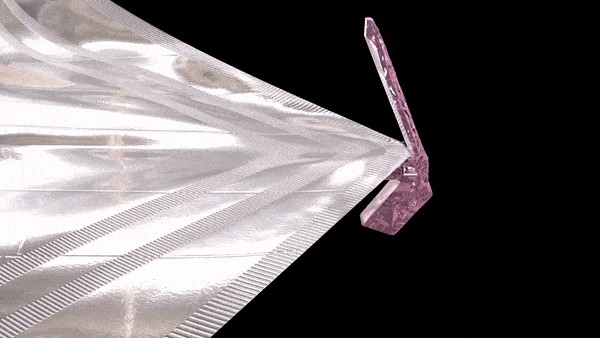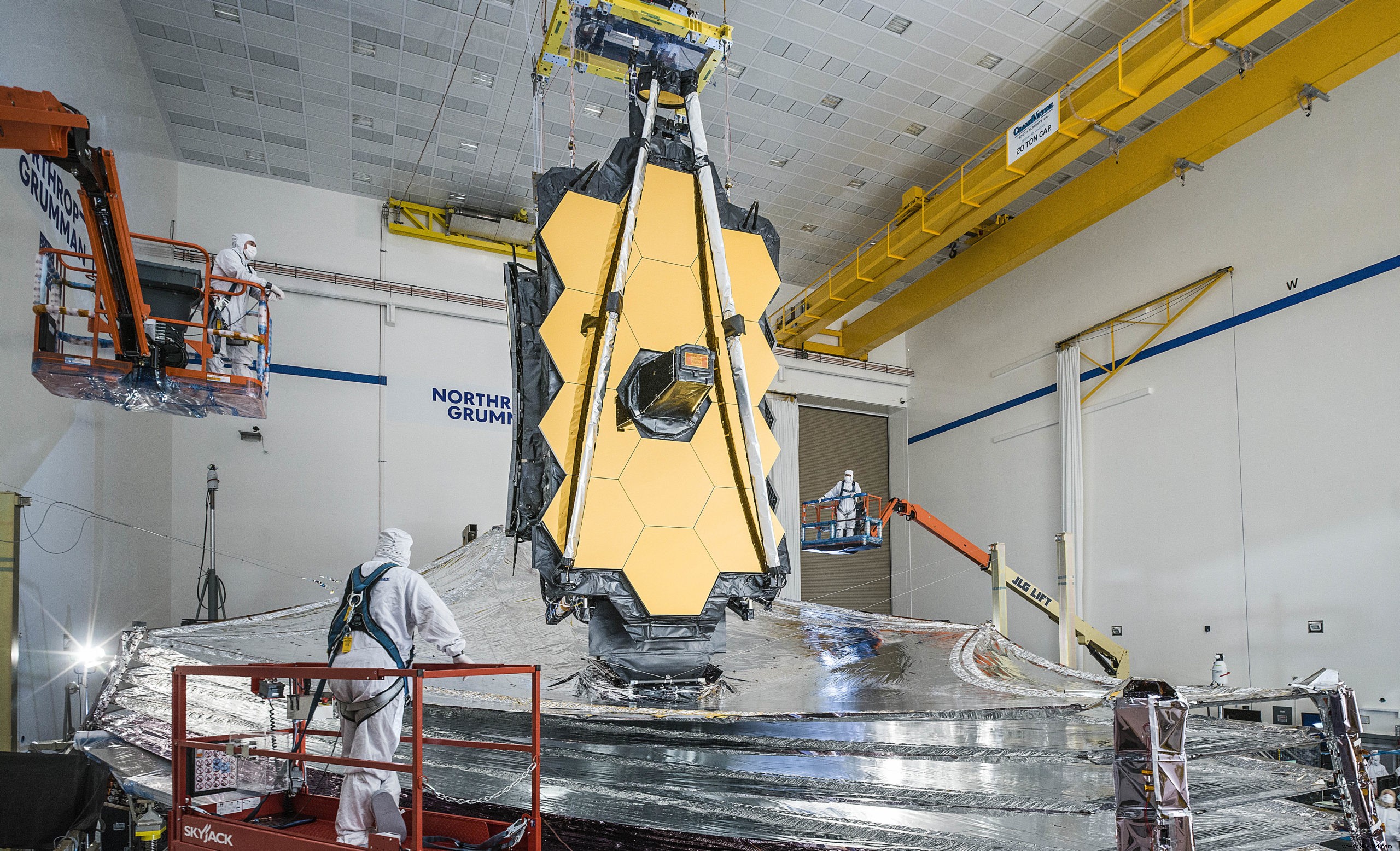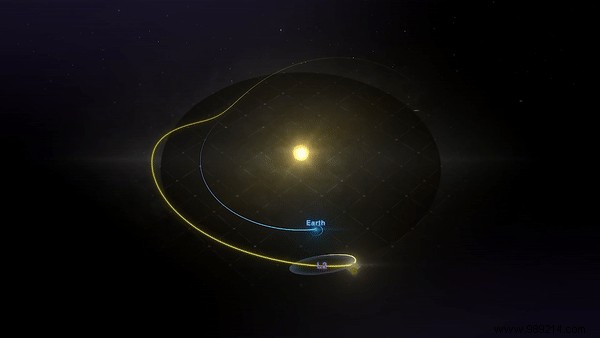The James Webb Telescope continues its deployment process in space. This Monday, January 3, mission controllers began tightening the tension on its huge sunshade, a five-layer, ultra-reflective, tennis-court-sized shield designed to keep the observatory cool enough. /strong>
Launched last Christmas Day, the James Webb Telescope will focus entirely on infrared wavelengths, ideal for probing the early Universe. To detect faint heat signals from very distant objects, however, the observatory must be cut off from any other stray heat.
To do this, in addition to positioning itself around the Lagrange point L2, 1.5 million kilometers from Earth on the side opposite the Sun, the telescope has a 22 m long by 11 m wide sun visor made of five very thin layers of extremely reflective materials. According to the engineers, this structure should make it possible to maintain the mirror of the telescope at temperatures around -223 ° C .
This sunshade is one of the centerpieces of the telescope. Its deployment is therefore very critical. The slightest false note could indeed ruin more than two decades of development. This Monday, January 3, the mission controllers however, successfully released the first layer of this sun visor .

The start of this process was delayed for two days due to two minor issues recorded this Sunday as engineers studied the JWT's power subsystem.
One of the issues involved a set of six motors used when tensioning the sunshade. Due to the sunlight, they showed a slightly higher temperature than expected. The engineers therefore reoriented the observatory so as to put them in the shade. The procedure took place this Sunday.
The other issue was with the output of the solar panel which affected the power of the telescope. The latter is powered by five panels, but a preset "maximum" duty cycle in a grid regulator module limited the available voltage and did not provide the observatory with the resources it needed for ongoing observing activities. . The telescope therefore had to draw more energy than expected from its backup battery. The engineering team had always planned to modify this cycle after the launch of the observatory. The proposed conditions eventually caused her to reset it earlier than expected.


All of these issues were more or less expected . Let's not forget that the telescope is still "stretching its legs" in space. If all goes according to plan, the deployment of the other layers of the sun visor will continue until Wednesday, January 5. Next, make way for the mirrors.